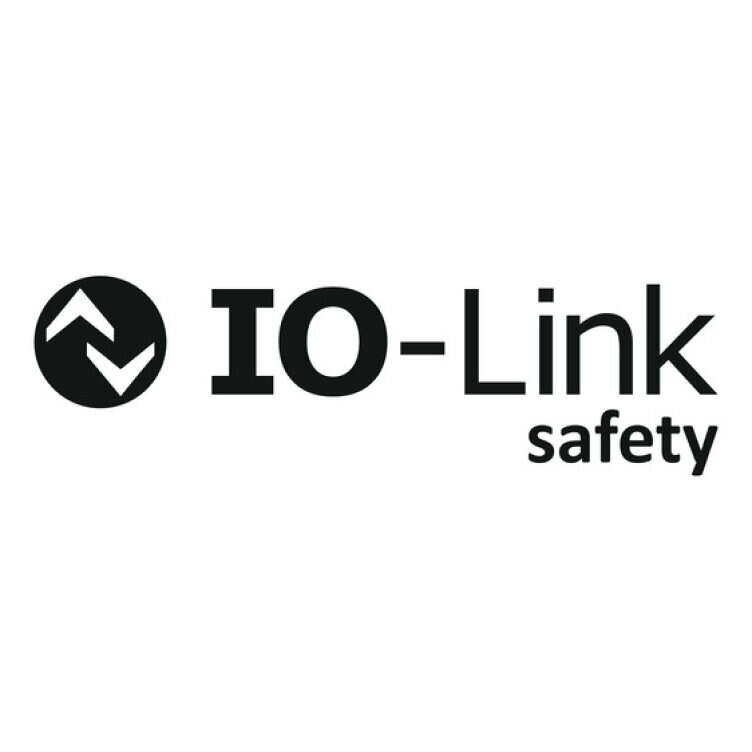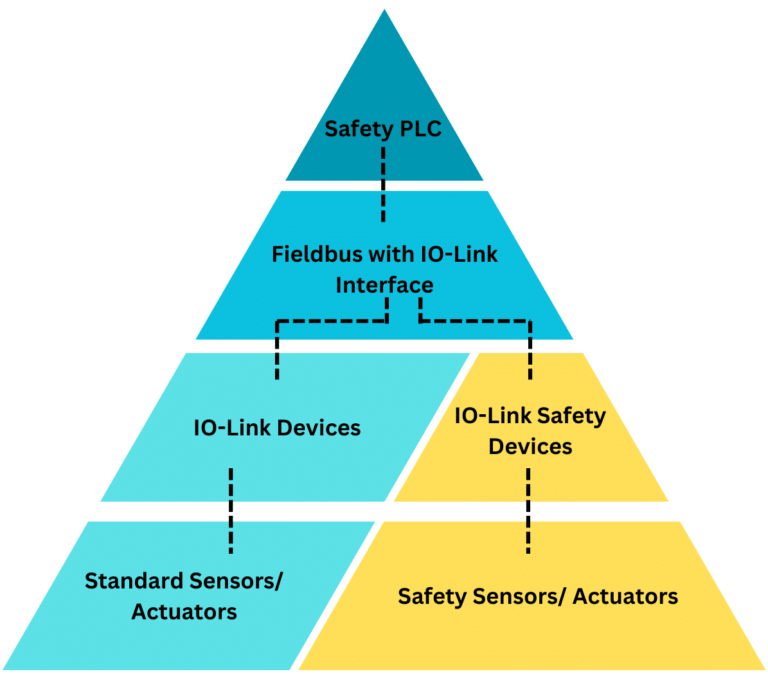
17
IO-Link Safety: What it is and what is means
IO-Link Safety: What it is and what it means
The ever-evolving landscape of industrial automation demands robust, flexible, and safe solutions. Enter IO-Link, a communication protocol that is revolutionizing how sensors and actuators interact with controllers in modern manufacturing environments. By enabling seamless two-way communication between field devices and control systems, IO-Link enhances data transparency, diagnostics, and efficiency.
Taking this technology further, IO-Link Safety extends the capabilities of standard IO-Link by integrating safety functions essential for high-risk industrial applications. Designed to meet stringent safety standards, it ensures reliable and fail-safe communication in environments where machine safety is paramount. Industries leveraging Pizzato BN Series Control Devices can benefit from improved connectivity and safety integration, enhancing the overall reliability of industrial systems.
With IO-Link Safety, manufacturers can simplify wiring, reduce installation costs, and enable predictive maintenance by collecting real-time diagnostics. As industrial automation advances, the adoption of IO-Link and its safety extension paves the way for smarter and safer production lines.
WHAT IS IO-LINK?
IO-Link is a communication protocol used in industrial automation enabling efficient communication between sensors, actuators, and controllers in industrial systems. The primary goal of IO-Link is to provide a point-to-point communication interface for smart devices in the field, allowing for seamless integration into the overall control system. IO-Link enables communication between a master device (such as a PLC or controller) and individual sensors or actuators, creating a point-to-point connection. It allows for the exchange of digital data between devices, providing more information and flexibility compared to traditional analogue connections. IO-Link also allows for the configuration and parameterization of connected devices, making it easier to set up and manage automation systems. This protocol supports bidirectional communication, allowing for real-time data exchange, diagnostics, and monitoring of connected devices. A key feature of these IO-Link devices are that they are typically designed for easy integration, and the protocol supports plug-and-play functionality, simplifying the installation and replacement of devices. IO-Link is an international standard (IEC 61131-9), ensuring compatibility between devices from different manufacturers.
WHAT IS IO-LINK SAFETY?
IO-Link Safety is an extension of the standard IO-Link communication protocol specifically designed for implementing safety-related communication in industrial automation systems. It allows for the integration of safety functions into the IO-Link architecture, enabling the transmission of safety-related data between safety devices and controllers. This extension enhances the flexibility and efficiency of safety solutions in manufacturing environments.

Functional Safety Fieldbus Profiles (FSCP), as standardized in IEC 61784-3, offers the possibility to conduct safe communication via certain communication channels such as backplane buses of a bus terminal. This is called “tunneling”. IO-Link can also be considered as a possible communication channel. However, such a solution is then not fieldbus-independent as expected from IO-Link, but a solution of the respective fieldbus profile and is also managed and accounted for by the corresponding fieldbus organization and not by the IO-Link community.
IO-Link Safety, on the other hand, is a fieldbus-independent safe communication profile that is tailored to the needs of IO-Link and standardized in IEC 61139-2. This means that safety devices only have to be developed once and not anew for each fieldbus variant. By adhering to the IO-Link Safety standard, manufacturers ensure interoperability and streamline the development process, ultimately leading to more efficient and cost-effective safety solutions in industrial settings.
The architecture of the Io-link System
The Safety PLC: The Safety PLC (Programmable Logic Controller) is a dedicated controller responsible for managing and executing safety-related functions in an industrial automation system. It may interact with the IO-Link Safety Master through a fieldbus or another communication interface.
Fieldbus with IO-Link Interface: The Fieldbus is the communication network that connects various devices within an industrial automation system. In the context of IO-Link Safety, the Fieldbus includes an IO-Link interface to support communication with IO-Link devices, including both standard IO-Link devices and IO-Link Safety devices.
IO-Link Devices: IO-Link devices are standard sensors, actuators, and other industrial devices that communicate over the IO-Link protocol. These devices are part of the broader industrial automation system and can include sensors like proximity sensors, photoelectric sensors, and actuators like valves and motors. Standard IO-Link devices are typically used for non-safety-critical functions in the automation process.

IO-Link Safety Devices: IO-Link Safety devices are specifically designed for safety-critical applications within the industrial automation system. Examples of IO-Link Safety devices include safety light curtains, emergency stop buttons, and safety interlock switches. These devices communicate safety-critical information using the IO-Link Safety protocol, ensuring that the information is transmitted reliably and with a high level of integrity.
What can an IO-Link device do that a standard sensor cannot?
IO-Link devices supply three types of data:
Process data: Condition information that the IO-Link device reads and sends to the IO-Link master or information that the IO-Link master sends to the IO-Link device. Status information is also transmitted in this process. You can thus check whether the process data is valid.
Service data: Information that can be written to the IO-Link device or read from the IO-Link device.
Event data: Notifications such as error messages, which are sent from the IO-Link device to the IO-Link master as soon as the event occurs.
Other Benefits
Productivity: IO-Link devices furnish the controller with intricate condition data, offering invaluable insights for maintenance planning. Swift problem identification is facilitated, allowing users to schedule preventative measures promptly.
Simplicity: Installation becomes a breeze as standard cables and connectors are all that’s needed. Maintenance is hassle-free, thanks to the ability to monitor systems and tweak settings effortlessly. With IO-Link devices’ error detection feature, pinpointing issues becomes quick and straightforward. Even the replacement process is a cinch, as parameter data is conveniently stored in the controller.
Extending IO-Link Safety with Monitoring and Output Solutions
IO-Link Safety enhances communication reliability in high-risk industrial environments—but a truly safe and functional system also depends on how safety inputs are monitored and how outputs are executed. To build a complete IO-Link Safety architecture, these components must be tightly integrated with programmable control and output response devices.
A key component in modern safety systems is the safety PLC. These programmable devices allow custom safety logic, with flexible input/output terminal assignments. Venus Automation offers a variety of models, including the MOSAIC PLC from Reer, Samos PLC from Wieland, and GEMNIS PLC from Pizzato—each delivering advanced and reliable safety functionality.
Where complex programmability is unnecessary, alternative options such as the safety relay range are available. This includes standalone relays, time-delay relay, speed-monitoring relay, standstill monitoring and timer, PCB relay, relay expansion modules, and control relays like the emergency stop relay, safety edge relay, light curtains relay, and two-hand control relay. These options provide effective and application-specific safety responses.
Essential manual inputs such as the emergency stop remain integral to any safety architecture, despite lacking an automatic safety input. Venus Automation supplies complete solutions including emergency stop accessories, pushbuttons, two-hand stops, and specialized devices like the rope pull emergency stop. For modern installations, wireless safety systems, including wireless emergency stop units, remote controls and accessories, are also available.
Critical integration elements such as contact blocks are supplied to ensure seamless circuit connections. Additional safety monitoring components include the safety encoder, which monitors motor speed, and interlock devices such as tongue solenoid interlock switch and electro-magnetic switches. For more complex safety guarding, multifunctional gatebox units provide a consolidated interface, easily mounted on protective enclosures like concertina guards.
Access restriction and control can also be achieved through electronic key systems, ensuring machinery operates only under authorized conditions. Finally, for output-side protection, safety contactors and pneumatic safety valve solutions are available to ensure reliable machine stoppage when hazardous conditions are detected.